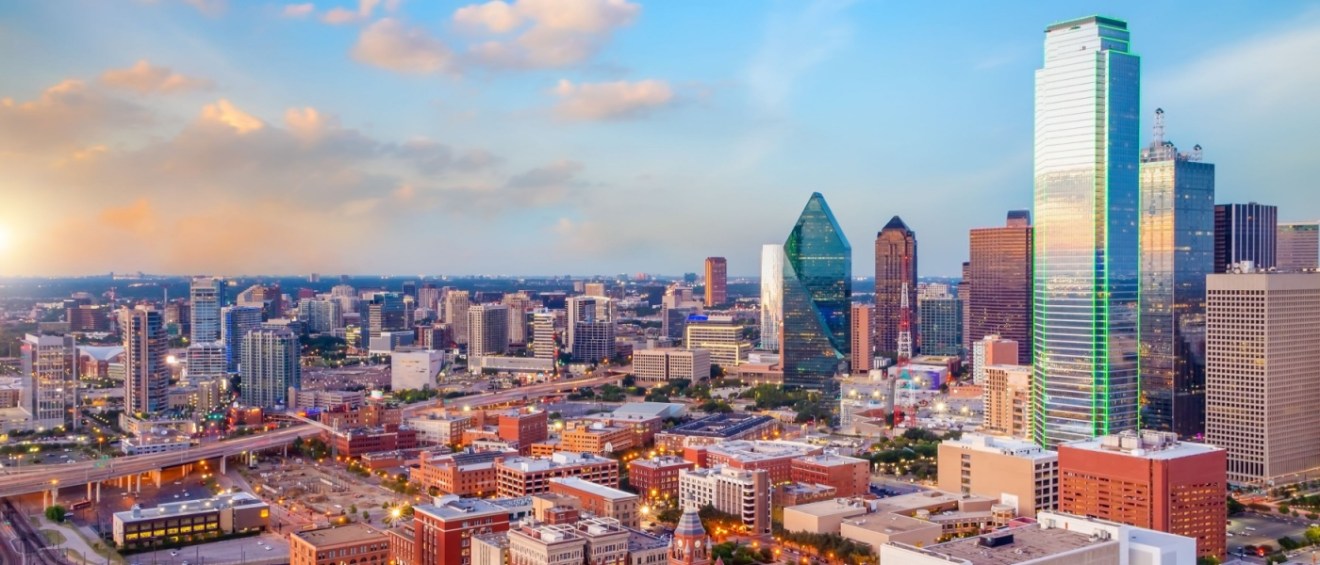Share this article:
Let’s be honest, packing everything up and starting fresh somewhere unfamiliar can be a handful, especially when you’re renting. Nailing down the right apartment in a neighborhood you like is only half the story. Getting a grip on the money side of things — like the cost of living — is crucial before you sign on the dotted line.
Knowing what your budget will look like helps everything go smoother, so you can actually enjoy exploring your new surroundings. That’s why figuring out expenses beforehand is a smart move. Things like utility bills, groceries, getting around town, and healthcare costs all add up and really shape your lifestyle as a renter.
If Dallas is on your radar, you’re in the right place. This guide breaks down what you can expect financially when you rent an apartment here. We’ll look at how the cost of living in Dallas compares to the rest of Texas and the U.S. average, giving you the scoop you need to budget like a pro and feel good about your choice.
What’s the average cost of living in Dallas?
Dallas is a city packed with energy, great food, culture, and plenty of opportunities. But what about the everyday costs? For context, the typical household income in Dallas was around $67,760 as of March 2025. That number gives you a general idea of what people earn locally, which is useful when you’re thinking about affordability here. Of course, what you spend will depend on your lifestyle, where exactly you choose to live, and your own spending habits, but having this baseline info is a good starting point.
So, how does Dallas actually stack up? Based on recent info (via RentCafe.com, using C2ER’s Index), the overall cost of living in Dallas runs about 11% higher than the average cost of living in Texas. When you look at the whole country, Dallas is just slightly higher, about 2% above the national average. However, housing costs (which include renting and buying) are actually about 2% cheaper than the national average.
On the flip side, be ready for utilities — like electricity and internet — because they tend to cost more here, about 12% higher than the national average and 9% higher than the Texas average.
Food costs are roughly in line with the national average, but they are about 6% higher than the Texas average. As for doctor visits and other healthcare services, expect to pay about 7% more than the U.S. average and 13% more than the state average. But, getting around is cheaper! Transportation costs are roughly 11% lower than the national average and 8% lower than the Texas average.
Lastly, everyday items and activities like clothes, going out, and other services will cost you a bit more — about 8% higher than nationally and 12% higher than the Texas average.
Breaking down the cost of living in Dallas
Breaking down the cost of living in Dallas requires looking beyond simple comparisons. While percentages comparing Dallas to national averages give you a solid general overview, they don’t always clarify what that actually means for your personal wallet day-to-day. Since everyone’s financial situation and spending habits are inherently different, examining the typical prices for common, everyday items and services helps make the abstract cost of living in Dallas feel much more concrete and real.

To give you a clearer picture, here’s a detailed peek at what specific things might cost when living in the city.
- Housing (renting & buying): Keep in mind that the actual prices fluctuate a lot depending on the neighborhood, apartment size, and fancy amenities, but here are some general numbers:
- Average monthly rent: $1,576
- Average home price: $472,592
- Mortgage rate: 6.60%
- Utilities: These basics are part of the deal, renting or owning. Here’s how much you can expect to shell out in Dallas:
- Energy bill (average per month): $224.87
- Phone bill (average per month): $207.36
- Food: Can’t live without it! Here are some ballpark prices for essential food items:
- Milk (gallon): $4.64
- Eggs (dozen): $3.81
- Bread (loaf): $4.07
- Potatoes (lb): $4.79
- Cheese (lb): $4.48
- Ground Beef (lb): $5.52
- Healthcare: Here’s how much Dallas residents spend, on average, to keep their health in check:
- Doctor’s visit: $140.99
- Dentist visit: $129.25
- Eye doctor (optometrist) visit: $141.62
- Transportation: Whether you drive or use transit, getting around costs money. Here’s how much you can expect to pay in Dallas for:
- Gasoline (gallon): $3.00
- Getting tires balanced: $52.04
- Goods & services: This covers your shopping, personal care, and fun money. Here’s a breakdown of these average prices in Dallas:
- Men’s shirt: $50.21
- Women’s slacks: $42.31
- Boy’s jeans: $31.54
- Haircut: $33.09
- Beauty salon: $67.05
- Dry cleaning: $17.22
- Movie ticket: $14.86
Seeing these specific costs gives you a better feel for what your bank account might experience in Dallas.
Is Dallas a smart move for renters?
Deciding if Dallas suits you involves weighing your priorities against your budget. The city’s cost of living is generally a notch above the national average, and definitely higher than in other parts of Texas — things like utilities, healthcare, and general shopping tend to cost more. But, on the plus side, housing is actually slightly below the national average, and you might save some money on transportation compared to other major U.S. cities.
That said, Dallas is a bit of a mixed bag cost-wise. You get the big-city buzz and opportunities, but that popularity comes with a price tag. Whether it feels affordable to you will really depend on your job, your spending habits, and the neighborhood you pick — speaking of, check out our curated list of the best affordable neighborhoods in Dallas.
The trick is to budget smart, explore different neighborhoods to find a spot that fits your vibe and your finances, and just know what you’re trading off. Definitely check out Dallas apartments listed on RentCafe.com. Finding that right place for both your lifestyle and your bank account will help you make the move feeling prepared and excited!
Share this article:
Veronica Grecu is a senior creative writer and research analyst for RentCafe. With more than 14 years of experience in the real estate industry, she covers a variety of topics in the apartment market, including rental competitiveness, new construction and other industry trends. Her work has been featured in top publications like The New York Times, The Washington Post, The Wall Street Journal, The Philadelphia Inquirer, The Miami Herald, CNN, CNBC, and more. Prior to RentCafe, Veronica was involved in producing real estate content for Multi-Housing News, Commercial Property Executive and Yardi Matrix. She holds a B.A. in Applied Modern Languages and an M.A. in Advertising and PR.
The Ready Renter has your back
Tips, news, and research curated for renters, straight to your inbox.




Related posts
Subscribe to
The Ready Renter newsletter







